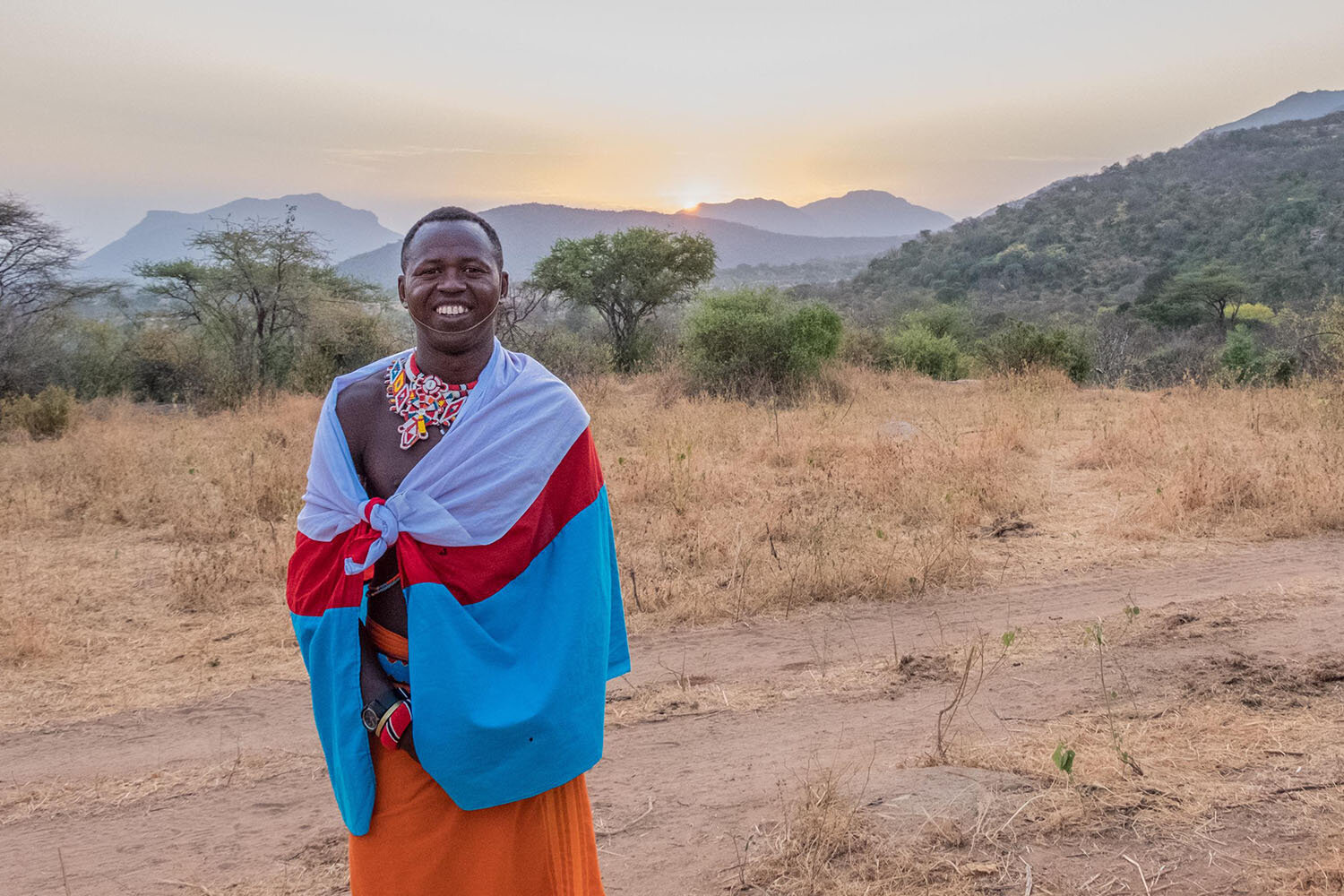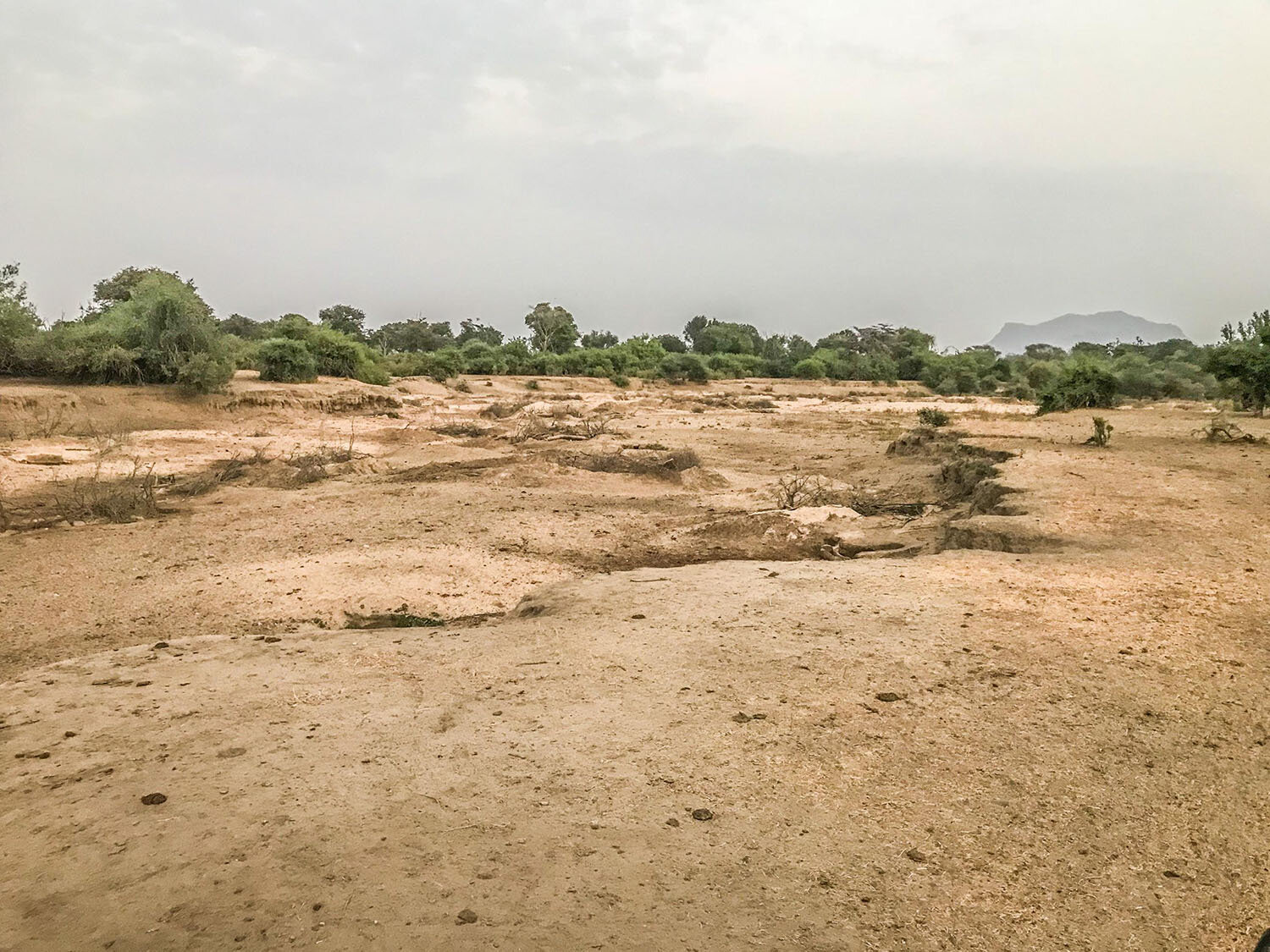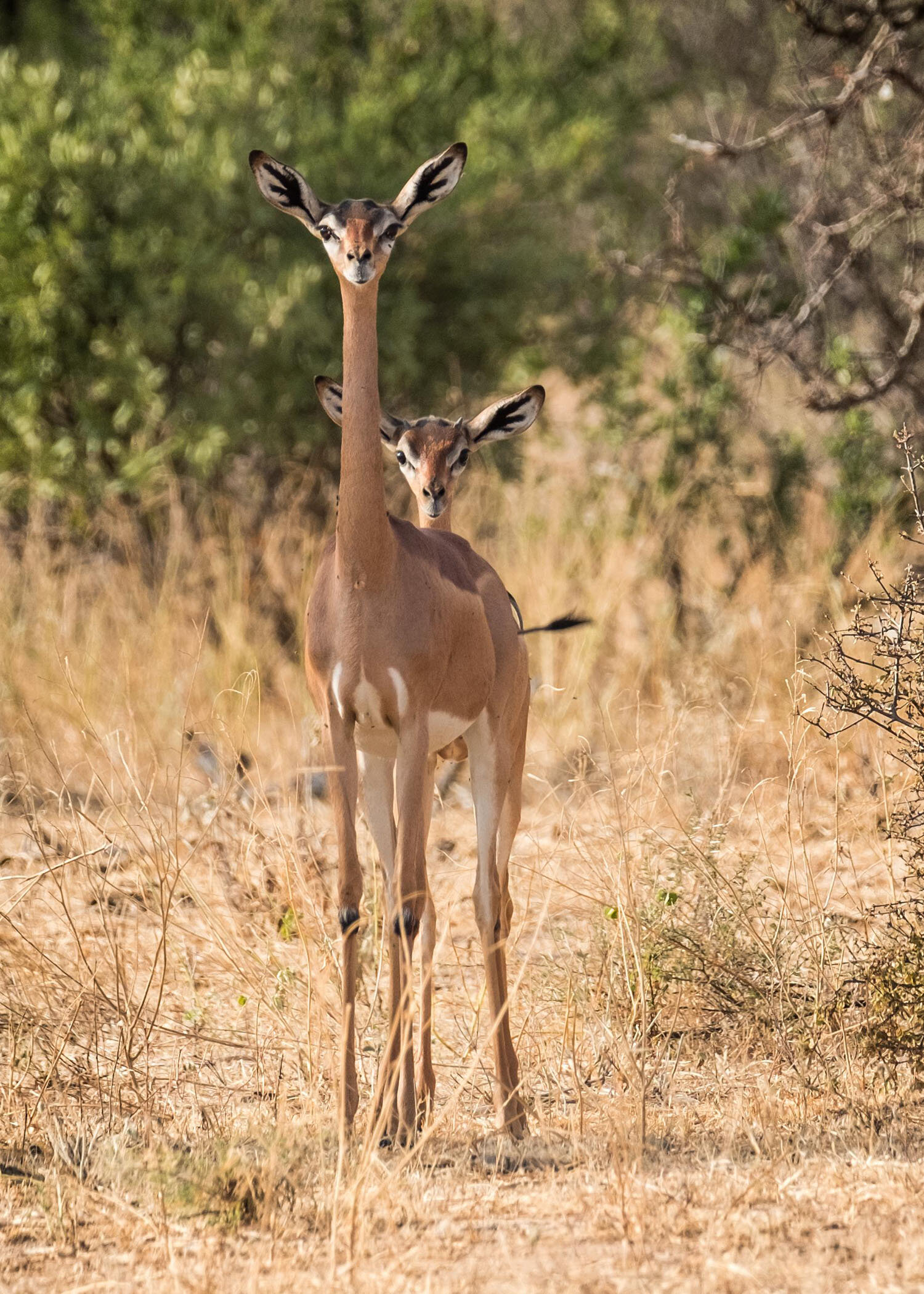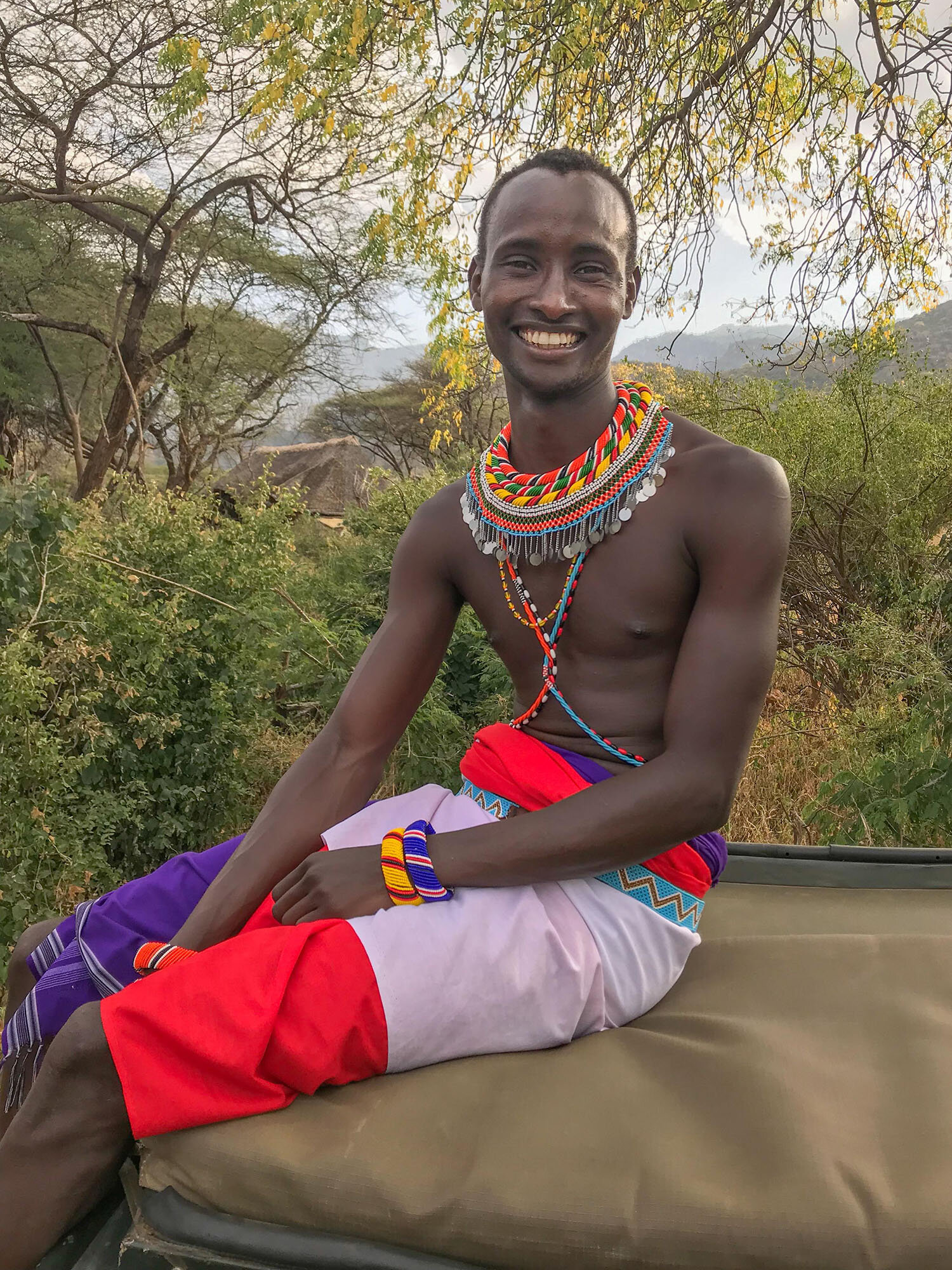The Singing Wells
May you experience each day as a sacred gift woven around the heart of wonder.
— John O’Donohue
One of the things that's special about Samburu land in Northern Kenya is it is desert country. The Samburu, like the Maasai, are pastoralists. They herd cattle, sheep and goats. During the rainy season, which is very short in that part of the country, they take their animals to water at any open river. But, for a good part of the year, particularly in the dry season, the rivers dry up.
The Samburu dig deep wells into the riverbeds to reach the ground water. These wells are called singing wells. Since I was visiting in January, there was a chance that the Samburu would be taking their herds to water them at the singing wells. When I arrived, I said to my guide, “Robert, I've heard of the singing wells.” “Yes,” he said, “it's dry season so we're using our singing wells.” “Could I go?” I asked. “You want to go to the singing wells?” he asked. “Absolutely!” I said. “Okay, we could go tomorrow morning. You can't take your camera because we don't allow any photographs, but I'd be delighted to take you. It's a walk.”
We set out early the next morning heading off from the lodge down a dirt trail. When the sun rose, it was hot and dusty. There was a ranger in a khaki uniform with a rifle over his shoulder, Robert in his beautiful Samburu dress and me, in my hiking gear with a water bottle. I'm not sure how far we walked, maybe 2 or 3 kilometers. Robert kept stopping and asking me, “Kathy would you like to sit? Would you like to rest? Would you take some water? You’d better take some water.” He was very concerned and protective of me. I assured him I was okay. A couple of times we stopped for some water.
I heard bells in the distance. “We’re close. Come this way,” said Robert leading me along a narrow path through the bushes. When we came out on the other side, I felt like I had walked through a veil and stepped into biblical times. Before me was a long, dry, riverbed full of cattle, tall thin Samburu men and young boys. The boys came with the smaller animals, the goats and the sheep and the men came with the cattle. Robert and I drifted in amongst the crowd. There were at least 2000 animals lowing, mooing and baaing in the dust filled gully.
As we passed the men, they acknowledged Robert and stared at me, the white woman following him. He led me through the crowd and we sat down under a tree and watched the story unfold before our eyes. All along the riverbed, there were holes, six feet wide at the most …. that had been dug into the riverbed, dozens of them. As I watched, a Samburu man stripped down naked. He looked like a tall slim vanilla bean standing there. He took a bucket, the size of a gallon paint can, and disappeared down the well. He was the number one guy. Number two guy followed number one and a third guy followed number two. These men were very tall, at least six feet. I heard a song echoing up from the well.
Me: “What are they singing?”
Robert: “They're singing their song.”
Me: “Who are they singing to?”
Robert: “They're singing to their cows”
“Their cows know their song?” I asked incredulously as a symphony of human and animal sounds rose above the riverbed.
“Of course,” he said.
At the top of the well was a trough, a hand dug log. I saw the top guy's head come out of the well and he tossed water into the trough. The men formed a human plumb line 20 feet down into the well, each man standing precariously on tiny ledges on the wall of the well. Number one guy passed the water up to number two guy, who passed the water up to number three guy who poured the water into the trough for the cattle. The trough was not that long, it handled about a dozen cows. The cows drank and then stepped away. Then the next wave of cattle came up.
Me: “It looks so organized.”
Robert: “Well, it is.”
Me: “How do they… how do the cows know... Oh, wait a minute. You answered that question. They're coming to their song. They know their well by their song. How do they know who gets to drink first?”
Robert: “The cows figure that out.”
You can imagine if there are 200 cattle in one man's herd, it takes quite a while for each cow to come and drink, and then move off. Eventually the whole herd was watered, the men climbed out, dressed, took their cattle and hung out with the other men for a while. It was like market day, they chatted with each other and then moved off when another group arrived.
We sat and watched from the sidelines. It’s interesting as a photographer to have the opportunity not to have a camera because I continue to see like I'm still looking through a lens and I stamp the images in my mind’s eye. I can easily remember the rhythm and the ancientness of the scene. The Samburu have been doing this for hundreds of years, nothing has changed.
Singing wells the next day without the herders
“How far do these men come with their cattle?” I asked Robert. “They’ve probably come 15 to 30 kilometers,” he answered. “Do they dod that every day?” I asked. “Oh no,” he said. “They come every two or three days.”
These men had nothing with them other than their staffs and their weapons, a machete and a conga tucked in their belts. I looked down the riverbed, several young boys seemed to be on their own with the smaller animals.
“Have boys come that far with their goats?” I asked. “Yes,” replied Robert. “You know, it's just part of their world.” “Do they …. are they drinking anything today?” I stammered. “No.” replied Robert. “Well, they would have had some milk and some blood in the morning.”
That’s what the Maasai and the Samburu live on. They bleed their cattle and mix the blood with the cow’s milk. That's their staple food. And that’s it, a little glass of milk and blood in the morning. Take your cattle, your sheep or goats 15 to 30 kilometres to water, then take them home again - without losing an animal to a leopard or a lion along the way.
I looked at Robert and smiled, recalling how worried he was about me and my water bottle. “You must think us white people are pretty high maintenance.” He smiled and said, “Yeah, that's what we call you - high maintenance.” We both laughed out loud.
I feel so privileged to have had this kind of opportunity and experience; to be invited into the Samburu world of tradition and practice. I know there's lots for me to learn from how the Samburu do things. We're always worried about educating, changing and bringing our culture to indigenous people. But really, what we should be doing, is sitting under the tree with them for a long time, listening and watching. They have much to teach us about survival, endurance and traditional practice.
Thank you for reading. Support conservation efforts by owning this print of a lion family or with every purchase in my full store. A percentage of all online sales goes to charitable organizations doing valuable conservation work across the planet.









